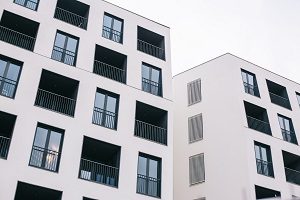
Environmental Considerations for Housing Authorities
Housing authorities are established to provide reasonable and safe housing for eligible low-income families, the elderly, and persons with disabilities. This free or reduced cost housing comes in all shapes and sizes, from shared living spaces/shelters, to high rise apartments and single-family houses.
Like other sites and facilities with a residential component, housing authorities have unique risks because of the health standards that must be met and maintained in a multi-unit living environment. With considerations for air quality to food handling, the insured needs to be covered for potential pollution releases that may occur at these sites.
Pollution Exposures for Housing Authorities
Exposures may include, but are not limited to:
Mold, legionella, and other indoor air concerns
When residents or visitors are in a shared living space, microbial matter may infiltrate residential areas on dust particles, biohazard wastes may accumulate in many areas of the facility and be released into the air, and mold & legionella may stem from HVAC systems, water supplies, or water intrusion.
Asbestos, lead or lead based paint, PCBs being released into the air, or not contained properly
Asbestos may be used as insulation on boilers/pipes or can be found on tiles. Lead paint is often found in older buildings and often just painted over, and it is sometimes found in pipes that are used for drinking water. Polychlorinated Biphenyls (PCBs) are often found in window caulking, transformers, and fluorescent light ballasts.
Meth labs
The environmental space has seen a surge in methamphetamine claims. The chemicals used in these processes would be excluded on a typical GL policy, but could be covered on a Site Pollution policy. These chemicals are so volatile that some Site Pollution policies include a coverage extension called Emergency Response Costs, which is designed to respond to pollution incidents immediately.
Carbon monoxide
This is a colorless, odorless, and tasteless gas that is toxic to humans above a certain level. Malfunctioning boilers, furnaces, water heaters, or back-up generators may be a source of this gas.
Environmental Coverage for Housing Authorities
Coverage for housing authorities is often based on Site Pollution Liability, including several coverage extensions that can be added to this policy. These may address business interruption costs, non-owned disposal site coverage, Transportation Pollution, and crisis management expenses. Understanding each carrier’s specific policy form is imperative when placing insurance. As every fixed location is different, placing the correct coverage with the right coverage enhancements is key.
Site Pollution Liability currently costs as little as $3,000, with many limit options and available. For more information on Site Pollution Liability for housing authorities, please contact us.
Type: Blog